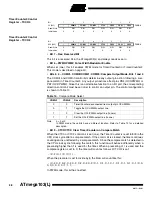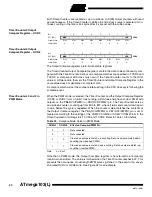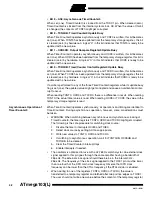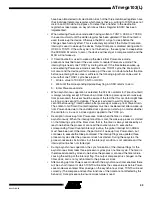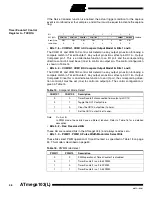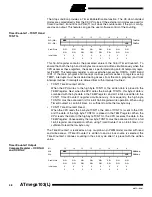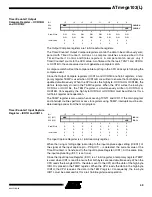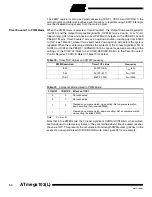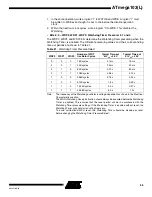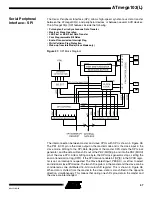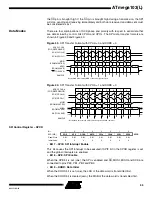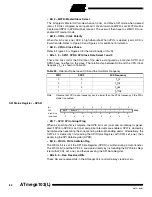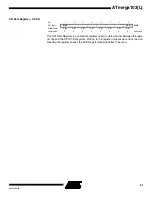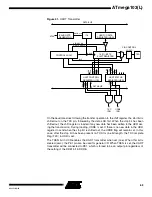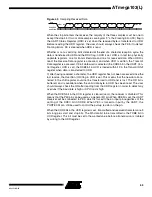
50
ATmega103(L)
0945G–09/01
The TEMP register is also used when accessing TCNT1, OCR1A and OCR1B. If the
main program and interrupt routines perform access to registers using TEMP, interrupts
must be disabled during access from the main program.
Timer/Counter1 in PWM Mode
When the PWM mode is selected, Timer/Counter1, the Output Compare Register1A
(OCR1A) and the Output Compare Register1B (OCR1B) form a dual 8-, 9- or 10-bit,
free-running, glitch-free and phase-correct PWM with outputs on the PB5(OC1A) and
PB6(OC1B) pins. Timer/Counter1 acts as an up/down counter, counting up from $0000
to TOP (see Table 16), where it turns and counts down again to zero before the cycle is
repeated. When the counter value matches the contents of the 10 least significant bits of
OCR1A or OCR1B, the PB5(OC1A)/PB6(OC1B) pins are set or cleared according to the
settings of the COM1A1/COM1A0 or COM1B1/COM1B0 bits in the Timer/Counter1
Control Register, TCCR1A. Refer to Table 19 for details.
Note:
X = A or B
Note that in the PWM mode, the 10 least significant OCR1A/OCR1B bits, when written,
are transferred to a temporary location. They are latched when Timer/Counter1 reaches
the value TOP. This prevents the occurrence of odd-length PWM pulses (glitches) in the
event of an unsynchronized OCR1A/OCR1B write. See Figure 35 for an example.
Table 18.
Timer TOP Values and PWM Frequency
PWM Resolution
Timer TOP value
Frequency
8-bit
$00FF (255)
f
TCK1
/510
9-bit
$01FF (511)
f
TCK1
/1022
10-bit
$03FF (1023)
f
TCK1
/2046
Table 19.
Compare1 Mode Select in PWM Mode
COM1X1
COM1X0
Effect on OCX1
0
0
Not connected
0
1
Not connected
1
0
Cleared on compare match, up-counting. Set on compare match,
down-counting (non-inverted PWM).
1
1
Cleared on compare match, down-counting. Set on compare match,
up-counting (inverted PWM).



